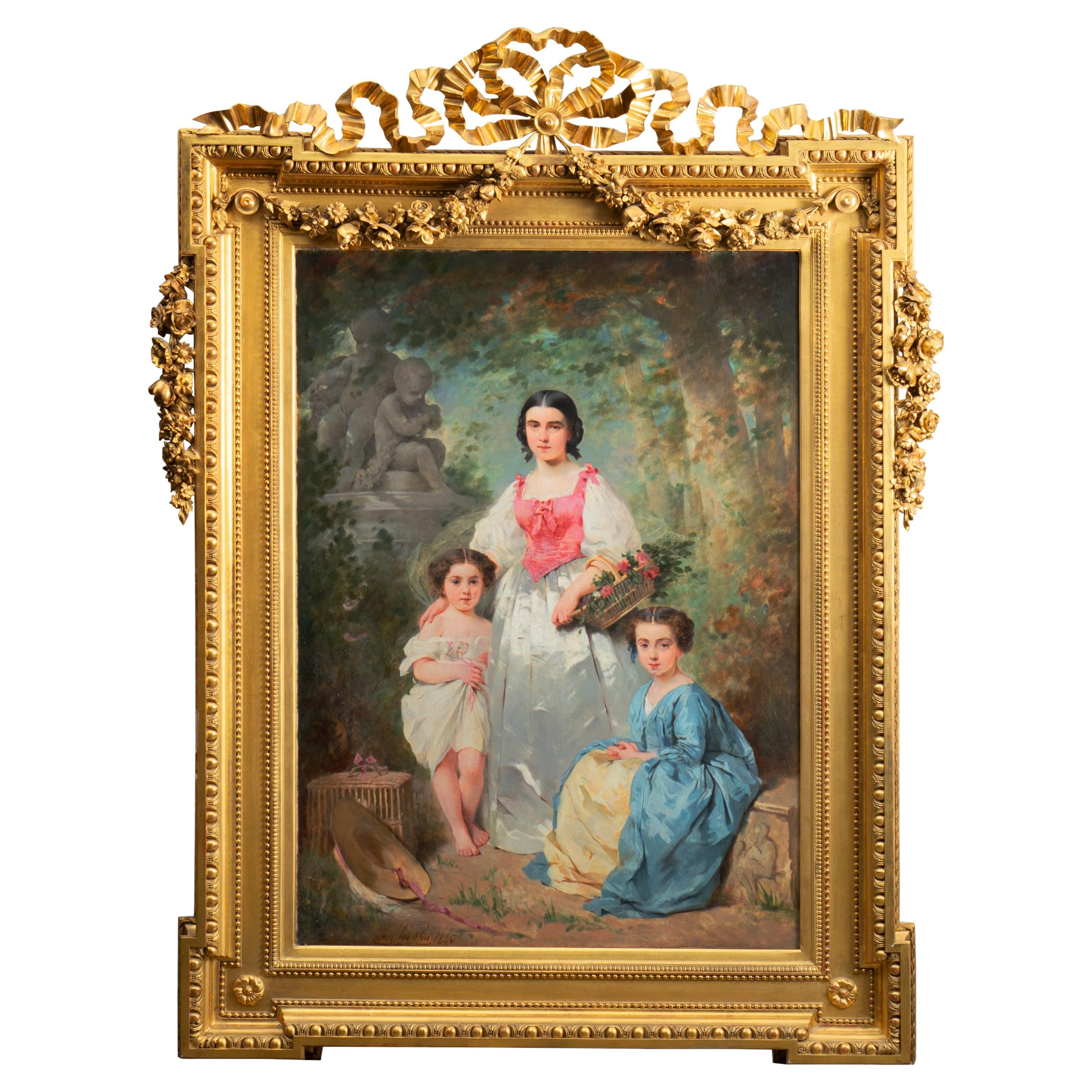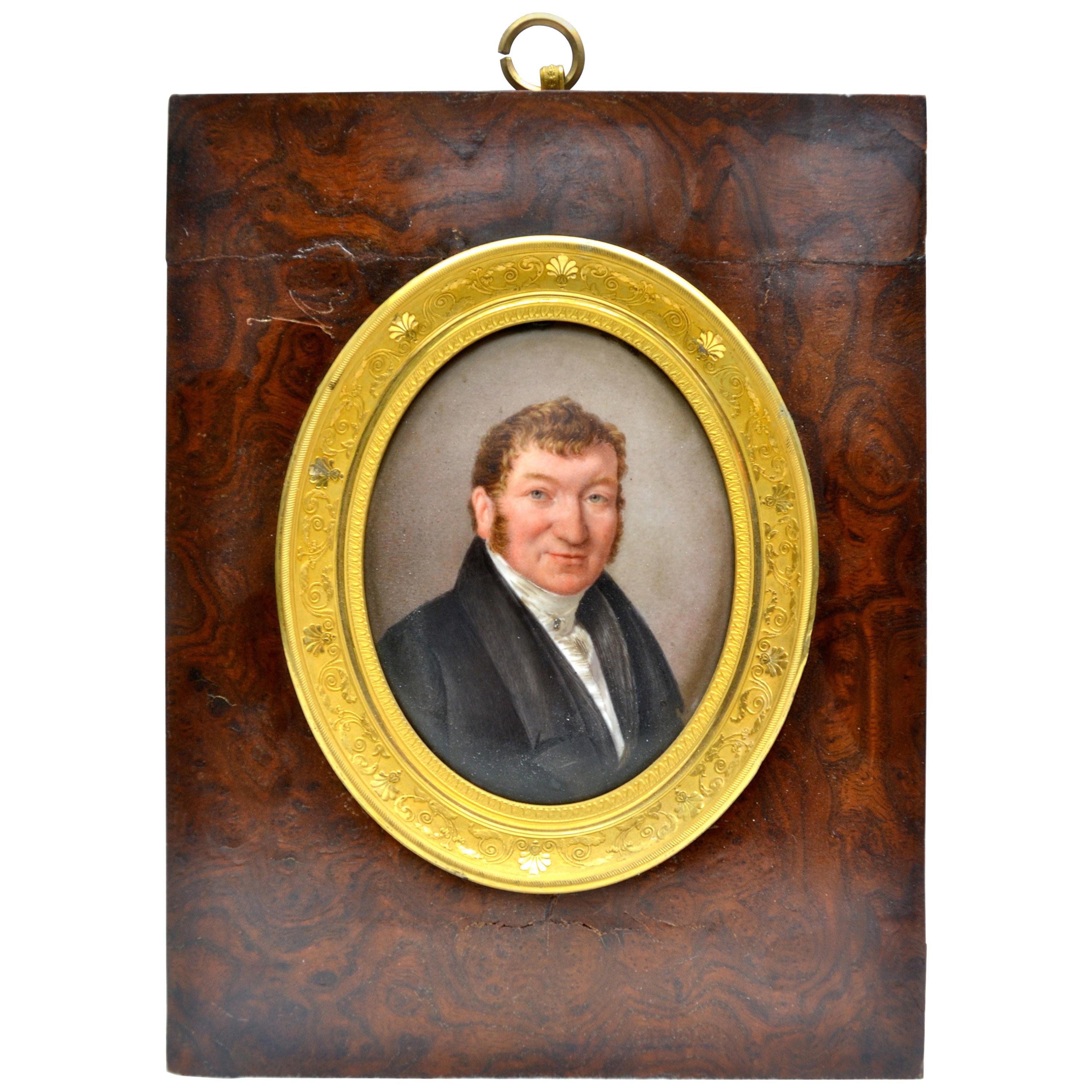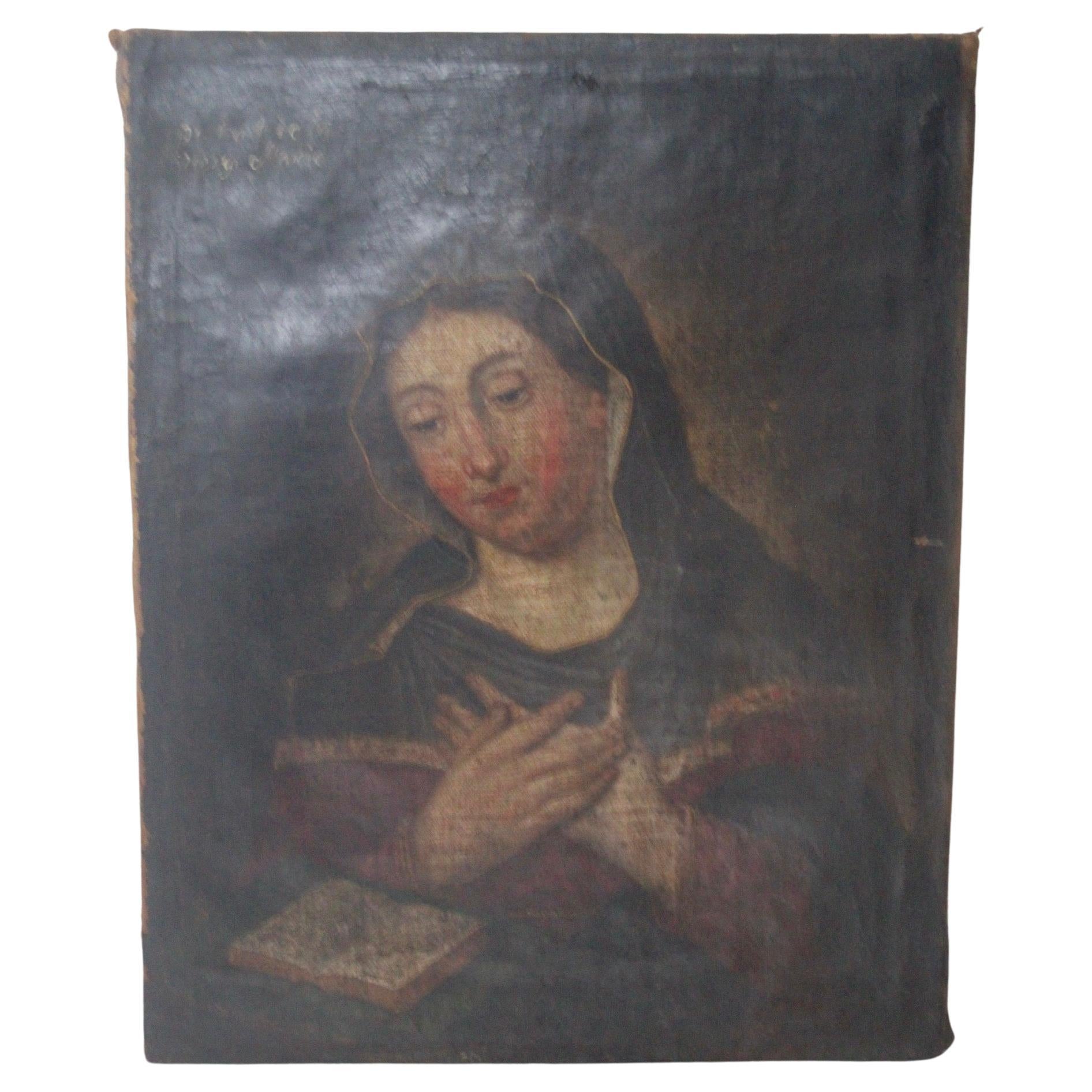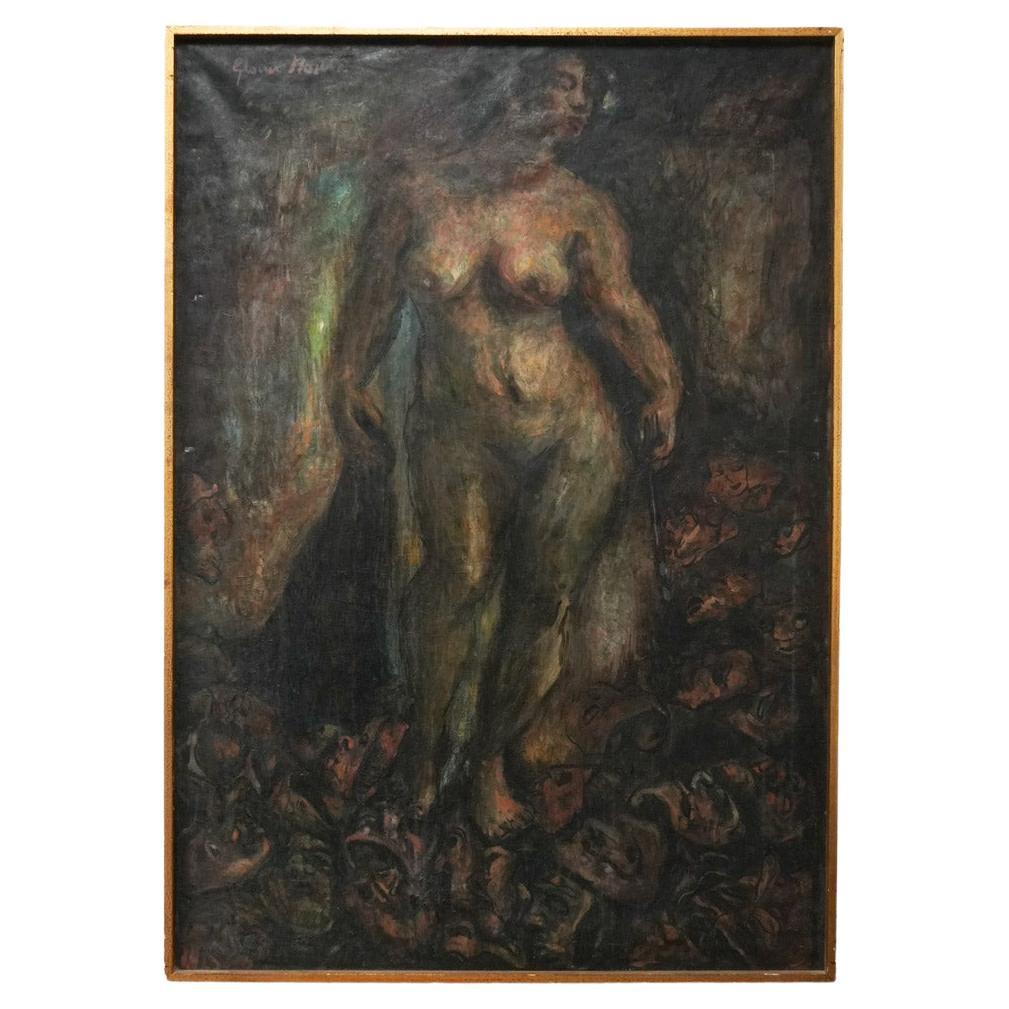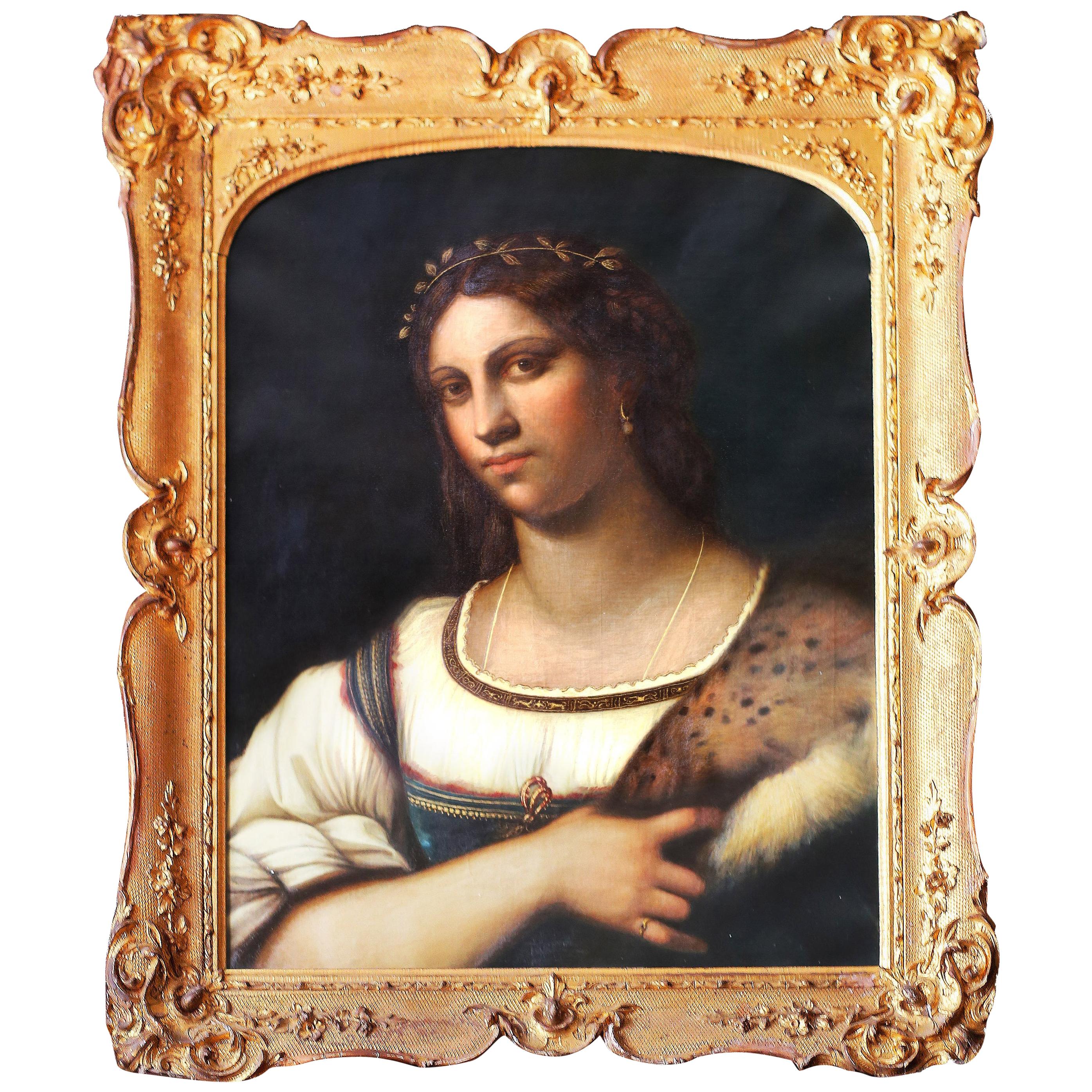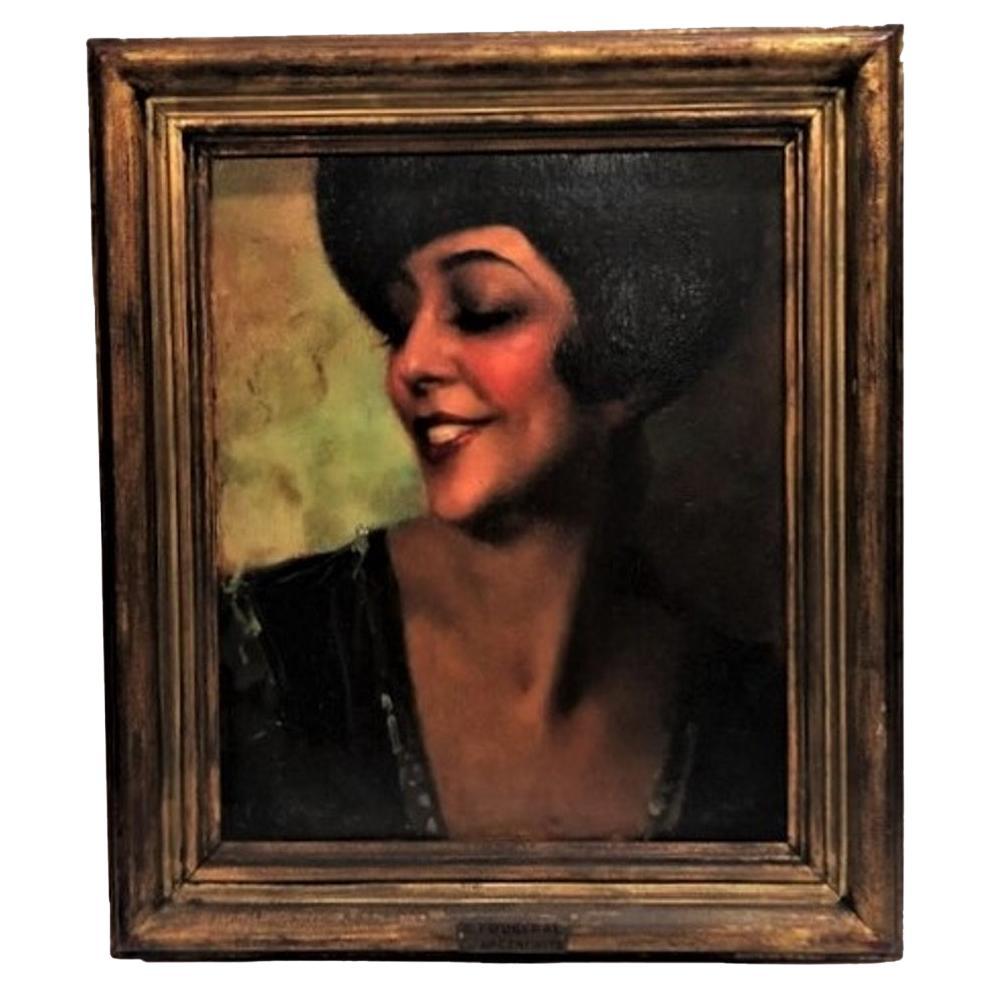Items Similar to Portrait of Gilles Armand Vaquier de la Baume c. 1825
Want more images or videos?
Request additional images or videos from the seller
1 of 6
Portrait of Gilles Armand Vaquier de la Baume c. 1825
About the Item
Bourbon Restoration portrait of French man. Dating from c. 1825, this handsome oil on canvas painting depicts a *homme bourgeois* displaying all the earmarks of the of the less-militaristic, more-business-minded style of the period following the departure of Napoleon. He wears a sumptuous double-breasted jacket with a white waistcoat and cravat a la Beau Brummell, his hair brushed forward in the neo-Roman style made fashionable by the French Revolution. A posthumous label on the reverse identifies the sitter, who died in 1846. The frame is modern but does’t look at all discordant with the painting.
- Dimensions:Height: 27.64 in (70.2 cm)Width: 22.05 in (56 cm)Depth: 5.91 in (15 cm)
- Materials and Techniques:
- Place of Origin:
- Period:
- Date of Manufacture:c. 1825
- Condition:Wear consistent with age and use.
- Seller Location:263-0031, JP
- Reference Number:1stDibs: LU9609237947352
About the Seller
New to 1stDibs
Joined in the past six months.
5.0
Vetted Seller
These experienced sellers undergo a comprehensive evaluation by our team of in-house experts.
Established in 2023
1stDibs seller since 2023
Typical response time: 17 hours
- ShippingRetrieving quote...Ships From: 263-0031, Japan
- Return PolicyA return for this item may be initiated within 14 days of delivery.
More From This SellerView All
- Eighteenth-Century Portrait of an Italian ManLocated in 263-0031, JPAn oil-on-canvas portrait of an Italian nobleman from the period c. 1760. The subject poses in front of his extensive library. The canvas and frame are in excellent condition. The ma...Category
Antique Mid-18th Century European Paintings
MaterialsCanvas
- French Oil On Canvas Portrait of a Man c. 1800Located in 263-0031, JPFrench oil on canvas portrait of a man c. 1800. The bourgeois gent depicted here displays the cliched hand-in-waistcoat mannerism of the 18th and early 19th century. He’s wearing wha...Category
Antique Early 19th Century French Paintings
MaterialsCanvas
- French Oil On Canvas Portrait of a Woman c. 1835Located in 263-0031, JPA French oil-on-canvas portrait of a woman from the Louis Philippe period of 1830-48. Her ensemble and hairstyle place her to the mid-1830s. The canvas is in good unlined condition (...Category
Antique Mid-19th Century French Paintings
MaterialsCanvas
- Early 18th-Century Baroque Portrait of a NoblemanLocated in 263-0031, JPAn oil-on-canvas full-scale portrait of a standing man in costume typical of the Baroque era of c. 1720, France. Purchased from a dealer in Geneva, Switzerland. The canvas is in good...Category
Antique Early 18th Century French Paintings
MaterialsCanvas
- 18th Century Oil Painting Portrait of Petrus ChevallierLocated in 263-0031, JPA charming French 18th-century oil-on-canvas portrait of a pharmacist named Petrus Chevallier. Signed “Davila” verso, where it also dated “20 - 09 - 1753" and the title “Petrus Cheva...Category
Antique 1750s French Paintings
MaterialsCanvas
- Louis Philippe-Era Oil on Canvas Portrait of a WomanLocated in 263-0031, JPOil-on-canvas portrait of an elegant woman from the Louis Philippe Era (1830-48). The canvas and original frame are in excellent condition.Category
Antique Mid-19th Century French Louis Philippe Paintings
MaterialsCanvas
You May Also Like
- Charles Chaplin (French, 1825-1891) Portrait de la famille GrosBy Charles ChaplinLocated in Los Angeles, CACharles Chaplin (French, 1825-1891) Portrait de la famille Gros, placed in an ornate hand carved gilt wood frame. signed and dated 'Ch. Chaplin. 1860' (lower left) oil on canvas Dim...Category
Antique 19th Century French Neoclassical Paintings
MaterialsCanvas, Wood
- Miniature Portrait of a French Gentleman Dated 1825Located in Vancouver, British ColumbiaA finely painted oval miniature portrait on porcelain of a wealthy/aristocratic gentleman from the second empire period in France. The portrait is in an...Category
Antique Early 19th Century French Empire Paintings
MaterialsPorcelain
- Wall painting by Felix Cortey " portrait de la vierge Marie "Located in grand Lancy, CHpainting by Cortey de Bagnes signed back "peint par Cortey de Bagnes " representing as written directly on the painting "portrait of the Virgin Mary" Felix Cortey born and died in Ch...Category
Antique Late 18th Century Swiss Paintings
MaterialsFabric, Wood
- "La soledad de la artista", 1970s.Located in Lisboa, PTOil on canvas representing a naked woman, Gloria Morera Font (1938 - ), "La soledad de la artista", signed and dated 1976. Spain, 1970s.Category
Vintage 1970s French Space Age Paintings
MaterialsCanvas
- Portrait of La Fornarina after Sebastian Del PiomboLocated in Brooklyn, NYA fine Grand Tour copy of the Italian Renaissance portrait of "the baker's daughter" for many years attributed to Raphael but now attributed to Sebastian del Piombo...Category
Antique 1820s Italian Renaissance Paintings
MaterialsCanvas, Giltwood
- Emmanuel Fougerat, O/C Portrait of La Argentinita, ca. 1920By Emmanuel FougeratLocated in New York, NYDIMENSIONS: Height: 16.25 inches Width: 13.5 inches Depth: 2.25 inches Frame width: 2.5 inches ABOUT MODEL Encarnación López Júlvez, known as La Argentinita (Buenos Aires, March 3, 1898 – New York, September 24, 1945) was a Spanish-Argentine flamenco dancer (bailaora), choreographer and singer. La Argentinita was considered the highest expression of this art form during that time. López Júlvez was the daughter of Spanish immigrants in Argentina, where her father had a fabric business. While living there, two of her siblings died in a scarlet fever epidemic. Consequently, she was brought to the north coast of Spain in 1901, where she began to learn Spanish regional dances. When she was only four years old, she started learning flamenco from Julia Castelao. Her first public performance was at the age of eight at the Teatro-Circo de San Sebastián, in the Basque Country. She chose the name "La Argentinita" in deference to the famous flamenco dancer Antonia Mercé (La Argentina). After travelling throughout Spain as a child prodigy, she settled in Madrid to perform at Teatro La Latina, Teatro de la Comedia, Teatro de La Princesa, Teatro Apolo and Teatro Príncipe Alfonso. Her success led her to tour in Barcelona, Portugal and Paris, and then Latin America. In the early 1920s, she returned to Spain, where she worked in Madrid. Among her early performances was the 1920 premiere of Federico García Lorca's musical play El maleficio de la mariposa as "the Butterfly". She announced her retirement in 1926, but would quickly return to the show business as part of the artistic renewal that led her to the Generation of ‘27, in which she combined flamenco, tango, bulerías and boleros. She danced to the compositions of Manuel de Falla, Joaquín Turina, Isaac Albéniz, Enrique Granados and Maurice Ravel. She helped in the development of Ballet Español. Adapting pieces to popular tradition, she toured Europe, triumphing in Paris and Berlin and participating in the artistic movements of that time along with Spanish poets such as Rafael Alberti, Federico García Lorca, Edgar Neville and Ignacio Sanchez Mejias. Sánchez Mejías, an intellectual and bullfighter, was a married man and her lover. La Argentinita retired a second time to maintain her clandestine relationship with him. However, she would return to the stage with the aid of Sánchez Mejías, who participated in the search and employment of interpreters for her subsequent performances. In 1931, López Júlvez and García Lorca recorded five gramophone slate records, which were accompanied by García Lorca's piano. The selection of songs was prepared, adapted and titled Colección de Canciones Populares Españolas by García Lorca. Among the ten songs were "Los cuatro muleros", "Zorongo gitano", "Anda Jaleo" and "En el Café de Chinitas". With the beginning of the Second Spanish Republic, López Júlvez formed her own ballet company called Bailes Españoles de la Argentinita together with her sister, Pilar López Júlvez, and García Lorca. López Júlvez staged several flamenco theatrical shows, including an adaption of Falla's El amor brujo (Love, the Magician) in 1933, and Las Calles de Cádiz (The Streets of Cadiz) in 1933 and 1940.[7] She travelled through Spain and Paris, where she was recognized as one of the most important flamenco artists of her time. Her company included the flamenco figures Juana la Macarrona, La Malena, Fernanda Antúnez, Rafael Ortega and Antonio de Triana, who was her first dancing partner until the 1940s. At the end of her tour around Spain, her lover Sánchez Mejías was gored to death in 1934 in the Manzanares bullring. She sought refuge in her work and moved to Buenos Aires to dance at the Teatro Colón; from there she embarked on a long American tour. In 1936 she achieved success in New York. Afterwards, she returned to Spain but was forced to flee the country shortly before the outbreak of the Spanish Civil War. She travelled through Morocco, France, the UK, the Netherlands, Belgium and the USA, where she remained in exile in New York. From then until her death in 1945, she developed her career and became one of the biggest stars of international dance, and even participated in movies. In 1943, she presented the flamenco troupe El Café de Chinitas at the Metropolitan Opera House in New York, with her own choreography, texts by García Lorca, scenery by Salvador Dalí and the orchestra directed by José Iturbi. In addition, she performed at the Washington DC Watergate complex with her sister. On May 28, 1945, she gave her last performance at the Metropolitan of the orchestral work El Capricho Español, composed in 1887 by Nikolai Rimsky-Korsakov and based on Spanish melodies. At the end of the event, she had to be admitted to a hospital, where she died on September 24 from a tumor in her abdomen. She did not want to have it operated on because she did not wish to abandon dancing. Her body was repatriated to Spain in December and buried in the Spanish capital. That same year, the company of Bailes Españoles de la Argentinita was dissolved. Among the honors she received after her death was a plaque consecrated at the Metropolitan Opera House, positioned among the medals of Alfonso X El Sabio and La Orden de Isabel la Católica to honor her merits in the field of culture. ABOUT ARTIST Emmanuel Fougerat (French, 1869 – 1958) was a renowned French painter, museum curator and art historian. A former student of the Regional School of Fine Arts in Rennes, Fougerat studied in the studio of Albert Maignan and that of Jean-Paul Laurens in Paris. He was appointed director of the Nantes School of Fine Arts and was also the founder and curator of the Museum of Fine Arts in the same city. Emmanuel Fougerat was named Chevalier of the Legion of Honor in 1912. In 1923, he was placed on temporary leave from the French State in order to carry out a mandate as director of fine arts education in the Province of Quebec, Canada; where he served as an art teacher and director of the École des beaux-arts de Montréal from 1923 to 1925. Emmanuel Fougerat’s paintings are in the following public collections: • Nantes Museum of Fine Arts, France. • Museum of Modern Art in Paris, France. • Rennes Town Hall: permanent decorations. • Museum of Fine Arts of Saint-Nazaire (destroyed in 1944), France • National Museum of Fine Arts of Quebec, Canada. Emmanuel Fougerat is also the author of works on several French painters, including Albert Besnard, Paul Baudry...Category
Vintage 1920s French Art Deco Paintings
MaterialsCanvas
